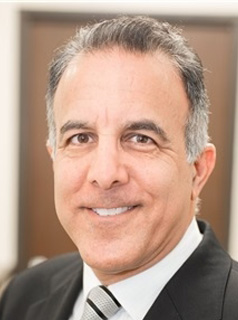What is Telemedicine? an Introduction- and It is Here to Stay!
 Telemedicine facilitates the delivery of health services for rural regions, and under ideal circumstances, it is useful for patient education and administrative meetings. Nearly 50 years ago, when telemedicine was introduced to the general population, the developers were uncertain how doctors and patients would react to a new way of practicing medicine. Of course, half a century ago there were no computers, so telemedicine included the use of the telephone, and sometimes, a 2-way radio. Now, telemedicine has many names, and a variety of services are offered virtually.
Telemedicine facilitates the delivery of health services for rural regions, and under ideal circumstances, it is useful for patient education and administrative meetings. Nearly 50 years ago, when telemedicine was introduced to the general population, the developers were uncertain how doctors and patients would react to a new way of practicing medicine. Of course, half a century ago there were no computers, so telemedicine included the use of the telephone, and sometimes, a 2-way radio. Now, telemedicine has many names, and a variety of services are offered virtually.
e-Health, i-Health and Telehealth
Telemedicine, a commonly used umbrella term, refers to any clinical activity associated with an element of distance. For most people, telemedicine involves interaction between a doctor and patient. Also called telehealth, a more politically correct word, distance patient care also goes by such fashionable names as e-health and i-health.
Over the past five decades, there have been numerous advances in modern medicine. Robots now perform surgery, and scientists have cures for many diseases that did not even have a name back years ago. Additionally, we now have telemedicine, a high tech way of providing patient care, and it has made huge strides in health related fields.
In addition to doctor and patient satisfaction, the government is also a big fan…well, for the most part. Many government officials believe that telemedicine is one of the greatest inventions in history. This online practice of medicine is a big money saver for the federal government, and the patients still receive quality healthcare. This is why the government offers many companies grants that fund research regarding telemedicine.
Teleradiology and PACS
Telemedicine is on the verge of major breakthroughs in the areas of diagnostics, and physicians can order diagnostic tests via online methods. This allows a patient to receive testing without having to travel hundreds of miles to the facility. Also, virtual healthcare permits patients to receive necessary education and counseling, without having to deal with the inconveniences of coming in to the office.
Much of the growth of telecommunication technology has occurred in the form pilot trials and feasibility studies. Because of this, there is not convincing evidence regarding the cost effectiveness of the various applications, other than teleradiology. Advanced technology with digital imaging makes it possible for a doctor to view diagnostic images on computer screens.
Computer programmers and software developers work constantly to perfect teleradiology, and one innovative development is “Picture Archiving and Communications Systems” or “PACS.” This advancement allows management and storage of large amounts of information, freeing up healthcare facility file space.
Patient and Doctor Satisfaction
It has been proven that patient satisfaction has a huge effect on the outcome of individual health. If a patient has a positive experience with telemedicine, he or she is more likely to recover quicker than with a negative experience. Telemedicine researchers conducted several studies to determine if telemedicine has a place in the future of healthcare. These studies involve the satisfaction level of both patients and doctors.
Overall, most physicians are satisfied with the use of telemedicine, especially now that it has become so advanced. As the technology continues to advance, so will the rate of satisfaction for healthcare providers. When telemedicine first started to come into the light in the 90s, doctors were excited about the possibilities of providing better care, but cautious about the means of the health provision.
Confidentiality was an initial major concern for many doctors, according to recent studies. The healthcare professionals feared that the systems were not secure enough to protect patient identities and test results. With higher security standards in place, doctors and patients are now more comfortable. In another study, many physicians expressed concern about education and training to operate the equipment and devices involved with online care provision. Additionally, many providers still feel like the face-to-face contact with patients is necessary for adequate healthcare delivery.
Most patients express reserves about the use of telemedicine. However, several studies found that patients were satisfied with the results from online healthcare. In one study, researchers sent 60 patients to a rural area where the quality of the telecommunications was poor. The patients used telemedicine for a determined amount of time, and the overall results of the study indicated that the patients appeared pleased with the use of online healthcare.
In another study, patients first used telemedicine, and then followed up with a face-to-face encounter with their doctor. The majority of these patients agreed that the online healthcare was acceptable, but they expressed preference for face-to-face encounters. Regardless, in the majority of all studies, the younger generation appears more acceptable of telemedicine than older generations.
Researchers Compare Telemedicine to Conventional Practice
In 2002, virtual medicine researchers Hailey and associates conducted a systematic literature review that found 66 credible scientific studies that compared telemedicine to conventional practice. Over 55% of these studies suggested that telemedicine was advantageous over the conventional approach. Also, more than 35% of the reports highlighted the negative aspects of telemedicine. The most convincing efficacy and effectiveness evidence was given in the reports about teleradiology, particularly neurosurgical applications. Other areas that were deemed favorable included telemental health, teledermatology, home telecare, medical consultations, and transmission of echocardiogram data.
While many reports available referred to short-term outcomes and pilot projects, few suggested any routine use or long-term effectiveness of virtual medicine. Many of the benefits listed included avoidance of travel, cost effectiveness, and no delays in healthcare. Although useful economic outcome data has been received from telemedicine studies, good-quality trials and reports are fairly scarce and the most clinical findings are limited.
Benefits of Virtual Medicine
Crowdsourcing diagnostics are a powerful tool, harnessing the energy of the Internet and collecting the experience, knowledge and wisdom of hundreds of doctors. The result of this technology involves more accurate diagnoses. Other recently developed systems generate automated messages designed to remind patients to take medications, check blood pressure and refill prescriptions. There are many benefits of virtual medicine, and perhaps the most powerful tools are those designed to convey specialist care to remote regions, using advanced communication modalities. Other benefits include:
• Cost-efficiency – Less overhead means cheaper bills.
• Convenience – Patients schedule appointments online and avoid waiting rooms and long drives.
• Privacy – It provides a level of anonymity, more discrete than conventional doctor’s office visits.
Obstacles of Virtual Medicine
Certainly, like with every emerging technology, there will always be a collection of luddites to undermine the possibility of the concept. Some of the arguments presented include:
• Dehumanization – Patient will feel less empathy than what is felt during a face to face encounter. Technology will be hard-pressed to replace the bedside manner of a well-practiced physician.
• Data Integrity and Privacy – The news is chock full of cases of data breaches and hacking. Increased data security is critical to the complete acceptance of virtual medicine.
• Regulation and Accreditation – Virtual practices can be located anywhere, with varying degrees of oversight and regulation in place from region to region. At this time, virtual medical practice is fairly unregulated.
Pressing the Limits of Technology: Robotic Surgery
Telesurgery, conducted by so-called “online surgeons”, needs to be distinguished from robotic-assisted surgical technologies like Da Vinci or Zeus. Robotic-assisted devices require a surgeon physically present for operation. Pure telesurgery, also called robotic surgery, is a remotely-guided process, with the surgeon seated at a console guiding the robotic arms from afar. These exciting developments allow the conduct of transatlantic kidney operations. It should be noted that these patients, while operated on by remotely located surgeons, still require the physical presence of support personnel.
Robotic surgery has become commonplace for many procedures, to include prostatectomy and various gynecologic maneuvers. These methods are widely embraced because of miniaturization, precision, reduced risk of infection, faster healing time and less blood loss. Nonetheless, robotic surgery still faces several limitations. These include:
• High costs – It can be more expensive than regular surgery.
• Acceptance – Many people are not ready to be cut by a machine.
• Training – There is extensive training and experience required before a surgeon can confidently, safely and efficiently perform surgery by this means.. Most surgeons cannot justify the time and expense required to become qualified to conduct robotic surgery.
Virtual Intensivists and Distant Nurses
For intensivist physicians and nurses (who work in intensive care units), telemedicine is an increasing trend in inpatient healthcare. Healthcare workers are now able to monitor patients with bedside cameras and electronic tracking of clinical information, such as laboratory reports and vital signs. Considered remote care, the professionals can communicate orally with bedside caregivers in real-time to offer around-the-clock care (Yoo and Dudley, 2009).
In 2007, telemedicine investigators Barlow and colleagues conducted a review of the literature regarding home telecare for frail elderly adults and patients with chronic diseases. At least 60% of the studies originated in America, and more than 55% of the reports were published within the previous 36 months. The most effective telecare interventions were telephone nurse follow-ups and automated vital sign monitoring, which reduced health service requirements and improved clinical indicators. The researchers cited insufficient evidence about cost-effectiveness, security and home safety.
Telemedicine Diagnostics with Cloud Technology
How do doctors diagnose patients using telemedicine? The answer is clear, but complex. The healthcare provider uses devices called ultra-high definition (UHD) technology. Recently, scientists developed a UHD technological device called “Janet”. A group of researchers and engineers at the Universities of Bristol and Cardiff created this technology to enhance telemedicine practice. This UHD device magnifies the video stream four to eight times more than normal for better imaging.
To understand UHD technology, you need to understand the various methods. The UHD video enables doctors to utilize high fidelity visuals to replicate the body, necessary for modern diagnostic imaging. Both infrastructure and high-speed networking are needed for the delivery of this data-intensive1 digital medial to remote users. The researchers place a virtual patient, named Janet, in a diagnostic imaging portal (MRI, X-ray, CT scan or Ultrasound machine). The technician loads the real patient’s data into the system. When a diagnostic test is done, the results actually belong to the real patient.
Data Delivery System through 3-D Advancement
Janet is the virtual patient that contains the real patient’s information, previously uploaded into the data network. When a real patient needs an x-ray, of the arm for example, the use of 3-D technology will highlight and bring the arm to “life” on the virtual patient. Once the technician takes the x-ray, the radiologist will be able to determine if the real patient’s arm is broken. If the patients arm is broken, then treatment is necessary. They basic idea is to be able to diagnose a patient virtually. In the event that the patient’s arm was only sprained, he could wrap it in an ace bandage, put it in a sling or whatever the doctor orders. This saves the patient from having to make a trip outside of the home.
With this type of data collection, virtual patients can undergo other tests for diagnostic purposes. For example, there will be a demonstration at the SMRP Conference at the Indiana Convention Center from October 14th to 16th, 2013. Scientist plan to demonstrate “computational modeling on arterial cells,” which are the results of a collaboration with the Cardiovascular Sciences Research Group based at the Wales Heart Research Institute in Cardiff. These scientists designed the virtual patient along with all the data devices to diagnose all diseases, including heart disease.
High-Speed Thin-Client Design for 90% Increase in Responsiveness
Fujitsu Laboratories has developed innovative technology that will respond ten times faster than user operations, even with environments that are low-quality. Previously, client terminal desktop areas for graphics or video have not been adequate. Data is lost, transmissions are not clear and glaring occurs. With this new high-speed thin-client technology, the response time is slashed by up to 90%, making it ideal for users to operate these applications easily.
The design process, shared globally, enables developers to collaborate securely. Researchers believe this paves the way for other thin-client applications, like video-based employee education, tablets for remote operations, and product demonstration at customer sites. The Fujitsu Forum at the Tokyo International Forum exhibits this technology in May of this year.
How Patients and Providers Feel about Virtual Healthcare
Studies show that the real patients trust their doctors enough to agree to participate in telemedicine. Most patients feel that telemedicine has many benefits besides the elimination of travel from the home. For the patient with a difficult diagnosis, he or she can be “seen” by a specialist half way around the world without having to leave the comfort of home! Of course, there are always some people who prefer to see their doctor in person, and that option is not likely to go away anytime soon.
According to Whitten and Love (2005), results of patient satisfaction surveys indicate tremendously high levels of acknowledged gratification and approval, many times above the rates of satisfaction for traditional healthcare delivery. However, data from healthcare providers indicate concern about challenges and delivery barriers. Regardless, the information from both provider and patient satisfaction research suggest remarkable optimism for telemedicine.
Final Thoughts
Telemedicine is becoming increasingly popular among patients and doctors. However, it will never completely replace the face-to-face doctor/patient visit that we have all come to know. Telemedicine is suitable for many clinical uses, but there will always be health conditions, emergencies and critical care cases that cannot be treated virtually. Regardless, traditional medicine and telemedicine nicely complement each other.
Like it or not, with all its power and flaws, virtual medicine is here to stay. It is becoming more prevalent every day, with doctors utilizing technology in the practice of medicine regularly. Although telemedicine will never fully replace the conventional practice of medicine, it will undoubtedly continue to evolve into a distinct practice specialty all its own.
References
Barlow, J, Singh, D, Bayer, S & Curry, R (2007). A systematic review of the benefits of home telecare for frail elderly people and those with long-term conditions. Telemedicine and Telecare, 13(4): 172 – 17.
Docs Online (2009). The Doctor is IN Somewhere
Fast Company (2009). The doctor of the future.
Hailey, D, Roine, R & Ohinmaa, A (2002). Systematic review of evidence for the benefits of telemedicine. Telemedicine and Telecare, 8(1): 1 – 7
Yoo, EJ & Dudley, RA (2009). Evaluating Telemedicine in the ICU. JAMA, 302(24): 2705 – 2706.
doi:10.1001/jama.2009.1924
Smith, AC, Bensink, M, Armfield, N et al. (2005). Telemedicine and rural health care applications. Symposium, 51(4): 286 – 293.
Whitten, P & Love, B. (2005). Patient and provider satisfaction with the use of telemedicine: Overview and rationale for cautious enthusiasm. Symposium, 51(4): 294 – 300.
Wootten, R, (2001). Telemedicine. BMJ, 323(7312): 557 0 560.
Physician.org (2013). Cutting edge cloud network technology to enhance the fields of telemedicine. Retrieved from: http://phys.org/news/2013-04-edge-cloud-network-technology-fields.html
Physician.org (2013). Fujitsu develops high-speed thin client technology for 10-fold improvement in responsiveness. Retrieved from: http://phys.org/news/2012-05-fujitsu-high-speed-thin-client-technology.html#inlRlv
Whitten, P. & Love, B. (2005). Patient and provider satisfaction with the use of telemedicine: Overview and rationale for cautious enthusiasm. Electronic Medical Record Symposium, 51(4): 294 – 300.

WARNING: Limitations of Online Doctor/Medical Consultations and Online Prescriptions, QuickRxRefills Cannot and Will NOT Prescribe, Dispense, or Resell any and all medications Narcotics/Controlled Substances (this policy is fully enforced by the Drug Enforcement Administration (DEA)) for Anti-depressants, Pain, Anxiety, Weightloss, Sleep, ADHD/ADD, Anabolic Steroids, Testosterone Replacement Therapy and any and all Medications that contain GabaPentin or Pseudroephedrine including non-controlled substances or any medications that are considered controversial, Off Labeled (Growth Hormone aka HGH) or recalled in nature such (i.e. Retin-A, Accutane). Furthermore, QuickRxRefills is not a substitute for an office based physician in your location nor is it a substitute for Emergency Medical Care or 911. If you do experience a "true" medical emergency your are encouraged to pick up the phone and dial 911 as soon as possible.






